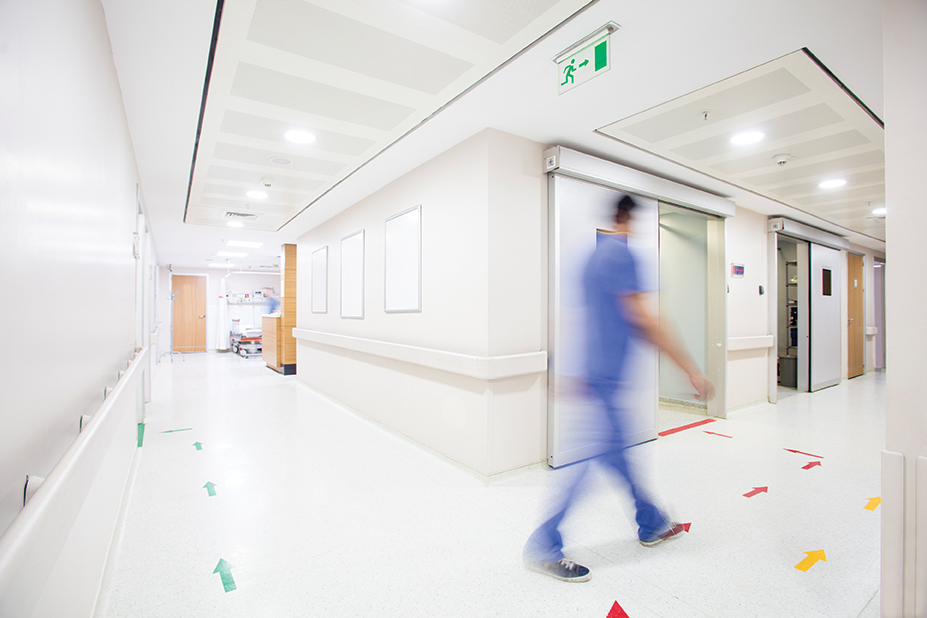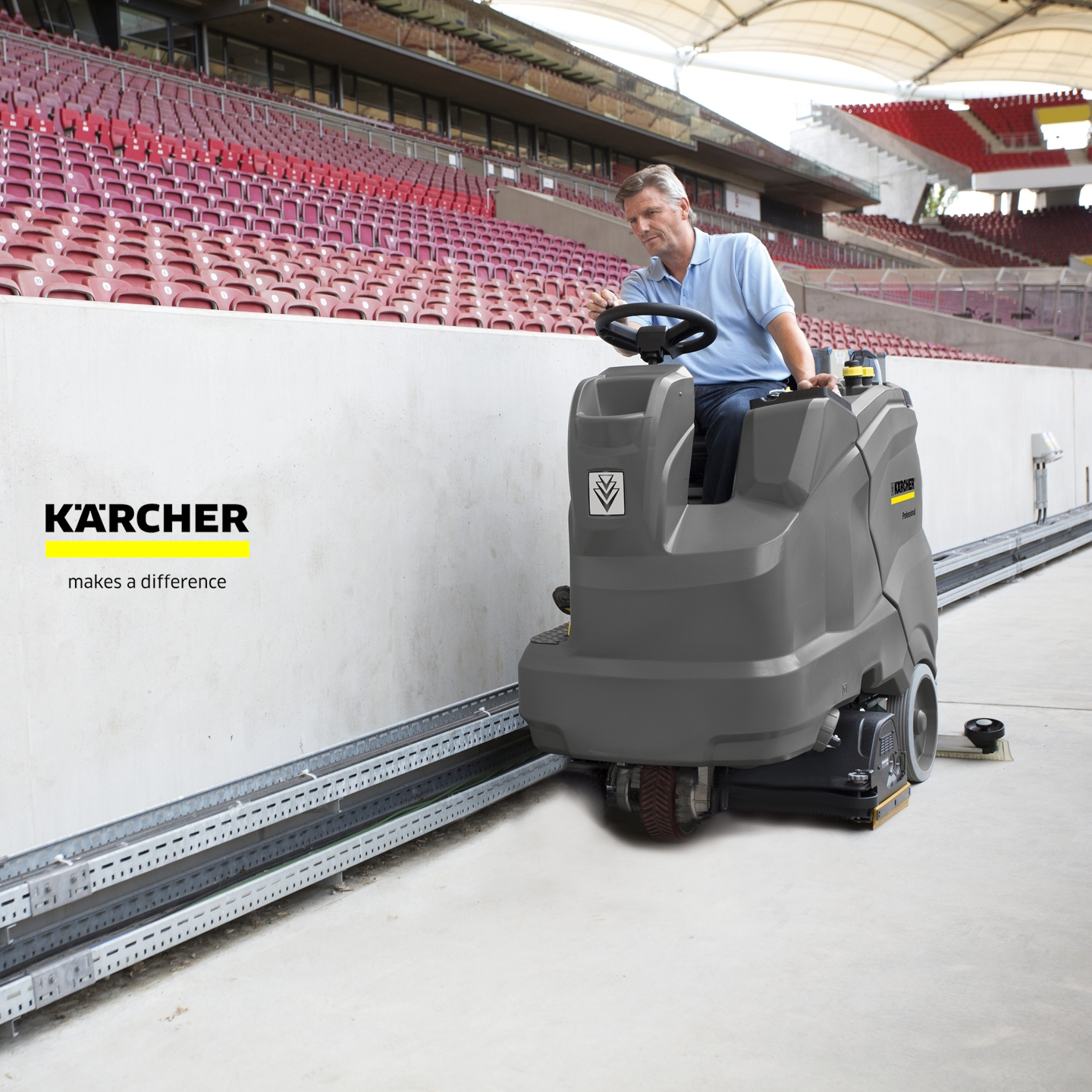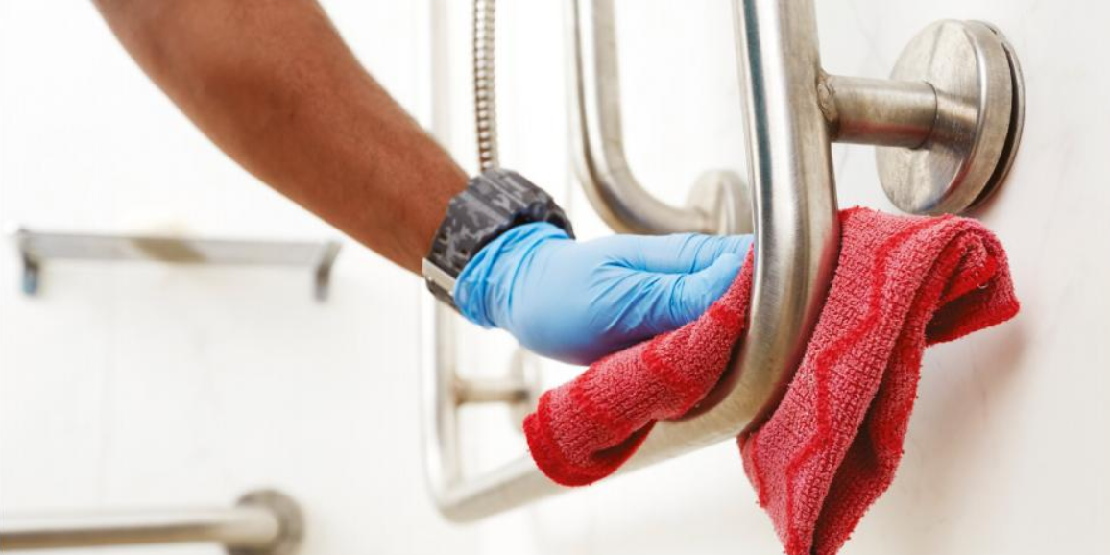
How clean is clean? It’s estimated there are around 165,000 healthcare-associated infections (HAIs) in Australia each year and yet a significant gap remains between the science and practice of cleaning – a key defence in the fight against the spread of disease and infection.
“Cleaning standards is a huge issue,” says Dr Greg Whiteley, chairman of Whiteley Corporation and adjunct fellow at the School of Medicine at Western Sydney University.
“In Australia, and around the world, there aren’t any uniform cleaning standards because standards of cleanliness have not yet been defined.”
According to Dr Whiteley there is a significant disconnect between perceived levels of cleanliness and the scientific evidence as to what constitutes a satisfactorily clean surface, with this disparity giving rise to harmful biofilm infections, HAIs and increasingly, antimicrobial resistance.
“The core metric through which we would measure cleanliness is still not scientifically clear, and there are quite a number of confounding issues that make it a very difficult problem to deal with,” Dr Whiteley explains.
“We still do not have a clear, cleanliness standard that matches the issue of what is on the surface, with the potential issue of human disease outcomes. We know what lives on surfaces, we know the diseases humans can catch and we know that surfaces and hands are the common link, however, we have not defined how ‘clean’ is sufficiently clean.
“As an industry we have not defined how frequently we need to clean to maintain that standard, and we have not defined the methods we are going to measure that standard by.”
While there are state-based guidelines for the prevention and control of infection in healthcare facilities, Dr Whiteley says there isn’t any scientific-based data to support which cleaning methods reduce and prevent the spread of infection.
Sharon Otterspoor, Associate Nurse Unit Manager Theatre, Mount Gambier and Districts Health Service in South Australia, agrees standardised training on evidence-based processes, and with specified trainers, would ensure a uniform approach to procedures.
“With the absence of clearly defined and robust training, cleaning practices and auditing of practices, cleaning staff learn bad habits from other staff. Standardised training and specified trainers would ensure all staff learn the same techniques and cleaning across a site would be uniform,” says Otterspoor.
According to Dr Whiteley, who will present a keynote on anticipating threats to human health at CIRI’s 2019 Science Symposium at Miami University in Oxford, there are some commonly used cleaning methods such as fluorescent marker spots, and Rapid Adenosine Triphosphate (ATP) testing.
The recent REACH (Researching Effective Approaches to Cleaning Hospitals) study found a major reduction in HAIs in 11 Australian hospitals following the use of ‘bundled’ cleaning services.
The REACH project is believed to be the largest prospective, multi-site and multi-factorial trial of hospital cleaning in the world. Its aim was to investigate whether a change in cleaning practices was effective in reducing HAIs.
Led by Professor Brett Mitchell the study – which Whiteley Corporation was an industry partner of – introduced a bundle of cleaning initiatives, tailored to each hospital in the study, to improve both routine and discharge hospital room cleaning. Hospital-wide promotion of the importance of cleaning in reducing infections was also undertaken to support a culture shift in the profile of environmental services staff.
Cleaning was audited using fluorescent marker technology. This involved applying gel dots, invisible to the naked eye, to surfaces. The dots resist dry abrasion and are removed only by a thorough cleaning technique.
The REACH cleaning bundle was successful at improving cleaning thoroughness and showed great promise in reducing vancomycin-resistant enterococci infections.
Hospitals in the study improved their cleaning practices from 55 to 76 per cent in bathroom areas and from 64 to 86 per cent in bedroom areas. This resulted in a 37 per cent reduction in the major HAIs, vancomycin-resistance enterococci (VRE), and a 5.8 per cent decrease overall in three types of infections.
Collaborative approach
In June 2018 Whiteley Corporation announced its co-investment of $3.5 million in a four-year manufacturing research partnership with the University of Sydney and the Innovative Manufacturing Cooperative Research Centre, to develop solutions for biofilm infections.
Biofilms formed by bacteria on living tissue cause morbidity and mortality in humans and animals. They also form on inanimate medical-related surfaces such as catheters, implants, medical instruments and almost all dry surfaces, where they pose a significant infection risk for patients. Biofilms can also be found on non-medical surfaces such as in pipes and on boat hulls, are expensive to remove and cause damage to surfaces.
“Bacterial biofilms cause both human disease and death, and these microbes are also responsible for contamination in industrial and institutional settings.”
Continuing its research into biofilms, Whiteley Corporation announced in September its plans to invest up to $4 million building the first human therapeutics manufacturing hub in the Hunter (NSW), which will be used to develop treatments for patients with biofilm-mediated infections.
“In modern microbiology, bacteria forms biofilms which are resistant to modern day antibiotics and disinfectants, and we are working on new technologies to kill and remove those bacteria from wounds and hospital surfaces.”
The complexities of developing the methodology is illustrated in Whiteley Corporation’s research paper on the removal of biofilms – co-authored by Professor Karen Vickery.
This research investigated the performance of a range of high level disinfectants against biofilms containing Staphylococcus aureus. What was discovered is that strong solutions of both chlorine and hydrogen peroxide did not remove the biofilm, nor kill the bacteria.
However, Whiteley Corporation’s latest patented developed under the tradename SURFEX®, both removed the biofilm and achieved a kill rate of 99.9999 per cent. Whiteley Corporation’s on-going research program is investigating further the difficulty of removing biofilm through a standardised cleaning program.
As Dr Whiteley explains: “One would think the simple act of a wiping a surface is straight forward but our research has found that there are nine separate variables for wiping a surface. Nine cleaners could have nine separate outcomes depending on which mistake they make, and that speaks volumes as to the level of difficulty tackling this issue.
He argues defining best practice methods and what constitutes as ‘cleanliness’ will also not only help cleaning providers but those paying for cleaning services.
“We want to make it easier for people who are paying for cleaning services to be able to measure the outcomes in terms of cleanliness. That’ s a real paradigm shift because at the moment it is based on tactile sense – what the [facility] looks and smells like.
“In high-rise, smart buildings they are now measuring, and monitoring how often bins are emptied, when bathroom dispensers are full and need to be emptied… and all those are important but the [technology] is not telling us if bugs are left on the surface.
“We’re working hard to turn [our] research into product outcomes that are meaningful, valid and internationally peer reviewed published data. Whiteley Corporation is a small-to-medium sized enterprise producing high quality, collaborative data in partnership with Australian universities, on a global scale.”
Challenges
According to the Dr Whiteley there are a number of multi-drug resistant infections, impervious to current generation antibiotics on our doorstep that the industry needs to be prepared for.
“The biggest single challenge we have not too far down the telescope is antimicrobial resistance. On our doorstep we have two levels of multi-drug resistant TB – MTB (multidrug–resistant TB) and XDR TB (extensively drug-resistant TB). There’s also been several cases [around the world] of Klebsiella pneumoniae,” he said, adding Clostridium difficile infection (CDI) as another public health threat.
A US-based study published in the American Journal of Infection Control in March 2017 found hospital room floors may be overlooked source of infection, including CDI, due to the likelihood of items in a patient’s room touching the floor, allowing pathogens from the floor to rapidly move to the hands and high-touch surfaces throughout a hospital room.
In the study by Abhishek Deshpande, MD, PhD and colleagues, researchers cultured 318 floor sites from 159 patient rooms (two sites per room) in five Cleveland-area hospitals. The hospital rooms included both CDI isolation rooms and non-CDI rooms. Researchers also cultured hands (gloved and bare) as well as other high-touch surfaces such as clothing, call buttons, medical devices, linens, and medical supplies.
The researchers found floors in patient rooms were often contaminated with Methicillin-resistant Staphylococcus aureus (MRSA), VRE, and CDI, with CDI being the most frequently recovered pathogen found in both CDI isolation rooms and non-CDI rooms. Of 100 occupied rooms surveyed, 41 per cent had one or more high-touch objects in contact with the floor. These included personal items, medical devices, and supplies.
In addition to increasing antimicrobial resistance, Dr Whiteley says awareness of the importance of hand hygiene and hand hygiene compliance from all healthcare workers, including clinicians, is another challenge that remains. In 2018 a study by UNSW medical researchers found hand hygiene rates in hospital staff drop sharply when humans undertaking compliance monitoring are replaced by machines.
A government-led mandatory hand hygiene program has operated in Australian hospitals for the past eight years, with human auditors ensuring staff follow hand hygiene guidelines, which require a minimum of 70 per cent compliance.
However, according to the study compliance rates fell from more than 90 per cent to 30 per cent when the human auditors were relieved by automated surveillance, creating infection risks for patients.
Dr Whiteley says the results of the study, led by UNSW Medicine Professor Mary Louise McLaws, is an example of the ‘Hawthorne effect’, used to describe the phenomenon of people changing their usual behaviour when they know they are being watched.
Healthcare facilities also face pressure to reduce costs and what Dr Whiteley describes as an often-revolving door of cleaning staff. As he explains: “Cleaners are massively undervalued. They’re not paid enough so therefore they leave before they are sufficiently trained so they’re skill base is sometimes limited. It’s a vicious cycle.”
Otterspoor agrees: “[Cleaning] staff frequently change and may only use the job of cleaning as a temporary position while waiting for another job. [There is] not enough emphasis is placed on the importance of cleaning and the pivotal role it plays in preventing HAIs.”
Despite the challenges Dr Whiteley is confident the science will soon catch up with the industry. “We see those involved with highly specialised areas such as crime scene clean up, water remediation and carpet cleaning are familiarising themselves with scientific methods and measuring their results. It is more complex but their margins are better. Anecdotally, they’re more profitable, more specialised and not interested in the bulk market. I think that is going to a natural flow on effect.”
Otterspoor believes providing standardised training and education to environmental cleaning staff will ensure best practice and create positive change. “Engaging all staff during the process of change promotes buy-in and inclusion and leads to better acceptance moving forward.”
Dr Whiteley anticipates universal cleaning standards will create a “paradigm shift” in cleaning contracts. “Cleaning services are always under price pressures, but if you don’t have a metric for how well those services are provided that is scientifically valid it’s hard to produce a proper value equation. All you can measure is the tactile issues and the number of complaints.
“It’s a very different paradigm if you have a metric to measure to. If you have a cleaning contract that has performance indices based on scientific methods, with penalty clauses if those [measurement] scores aren’t reached it becomes a very different cleaning contract.
“It’s suddenly not just about how many people turn up on the night, it’s how clean is the outcome of the provision of cleaning services. It’s a very different approach that has the potential to completely change the industry.”


Gary Oskay on: Industry Leaders Forum: Wayne Hill, CEO, RapidClean Group
John Ford on: Industry Leaders Forum: Joe Camilleri, Managing Director, Central Cleaning Supplies
Jasmine Soh on: Empowering the Oceania Cleaning and Hygiene Industry: INCLEAN Unveils Its Unified Magazine